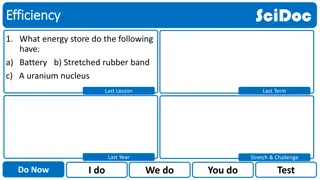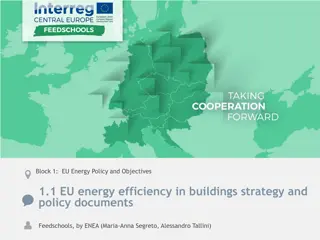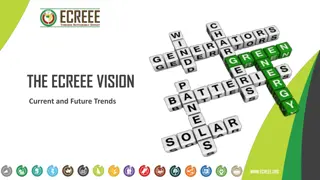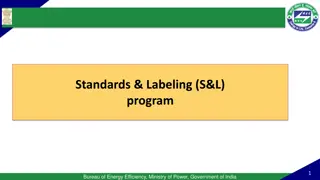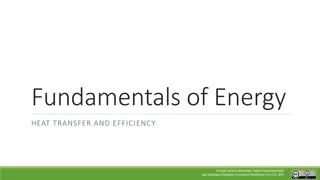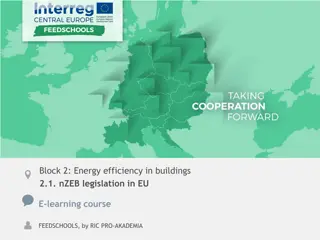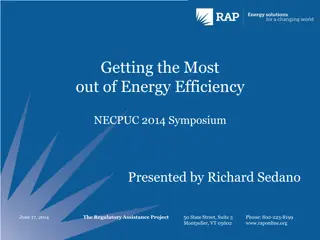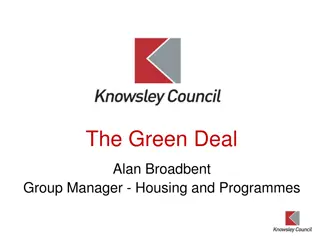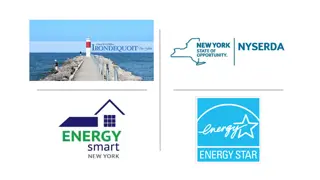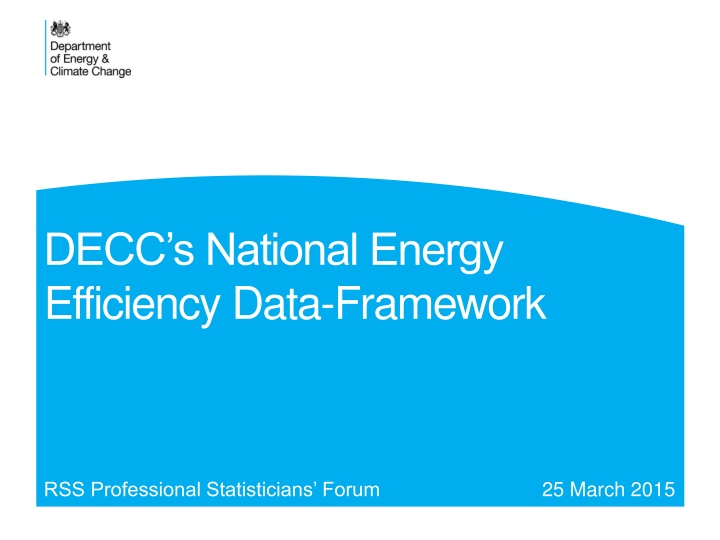
National Energy Efficiency Data Framework
An overview of the National Energy Efficiency Data Framework (NEED) presenting how it combines data from various sources to analyze energy efficiency measures and consumption patterns. The framework provides insights into energy usage and impacts of efficiency measures through anonymized datasets and reports.
Download Presentation

Please find below an Image/Link to download the presentation.
The content on the website is provided AS IS for your information and personal use only. It may not be sold, licensed, or shared on other websites without obtaining consent from the author. If you encounter any issues during the download, it is possible that the publisher has removed the file from their server.
You are allowed to download the files provided on this website for personal or commercial use, subject to the condition that they are used lawfully. All files are the property of their respective owners.
The content on the website is provided AS IS for your information and personal use only. It may not be sold, licensed, or shared on other websites without obtaining consent from the author.
E N D
Presentation Transcript
DECCs National Energy Efficiency Data-Framework 25 March 2015 RSS Professional Statisticians Forum
Contents Background What is NEED? How NEED has been used Developments Challenges Lessons learnt 2 DECC s National Energy Efficiency Data-Framework
Anonymised dataset published and NEED reports awarded National Statistics status. Results of NEED pilot published. Background 2003 2013 2009 2014 1948 2004 2012 2011 Individual meter point data first obtained by DTI (now DECC). 2003 & 04 published as experimental statistics, 2005 onwards National Statistics. First Official Statistics from NEED published. DUKES first published. Published new outputs and tools, reviewed methodology and consulted on proposed anonymised dataset. Energy White Paper greater regional and local focus required. Framework for linking data announced in Heat and Energy Saving Strategy (2009). 3 DECC s National Energy Efficiency Data-Framework
What is NEED? HEED Framework for combining data from existing sources Energy efficiency measures Energy Suppliers Consumption (Elec. and gas) Links data at property level (using UPRN) VOA AddressBase Unique property reference Property attributes Provides insights into how energy is used and the impact of installing energy efficiency measures Experian Household characteristics 4 DECC s National Energy Efficiency Data-Framework
Published reports Typical consumption by property attributes and household characteristics 2005 2006 2007 2008 2009 2010 2011 0% -2% Savings in gas consumption following installation of energy efficiency measures Percentage saving -4% -6% -8% -10% -12% Cavity wall insulation Loft insulation 5 DECC s National Energy Efficiency Data-Framework
6 DECC s National Energy Efficiency Data-Framework
7 DECC s National Energy Efficiency Data-Framework
Anonymised dataset HEED Energy efficiency measures Energy Suppliers Consumption (Elec. and gas) EPC AddressBase Unique property reference Property attributes 2. End user licence file approximately four million records available via end user licence. 1. Public use file approximately 50,000 records available to all. Other E.g. IMD and FP at LSOA 8 DECC s National Energy Efficiency Data-Framework
Future plans Understanding uncertainty More on interaction of household policies Inclusion of new data sources (e.g. FITs, Smart Meter flag) Models of gas/electricity consumption Coverage of Scotland Development of non-domestic NEED Enable wider access to more detailed data in a restricted environment 9 DECC s National Energy Efficiency Data-Framework
Challenges of matching/linking in Government and beyond Legal restrictions and access to data Flexibility Timeliness Missing data/quality of data/coverage Quality of match/unmatched records IT infrastructure 10 DECC s National Energy Efficiency Data-Framework
Lessons learnt Allow time to make sure all legal elements in place Plan ahead to ensure required permissions in data sources (e.g. new admin) Added value if compliment other sources of data (e.g. trials & surveys) Can be useful to help direct more expensive research Presentation & dissemination important to engage users/have policy impact Learn from others often similar issues in different contexts Setting up access, matching & cleaning more time consuming than analysis 11 DECC s National Energy Efficiency Data-Framework
Further information Further information on NEED available at: https://www.gov.uk/government/collections/national-energy-efficiency- data-need-framework Email: EnergyEfficiency.Stats@decc.gsi.gov.uk DECC s National Energy Efficiency Data-Framework 12








